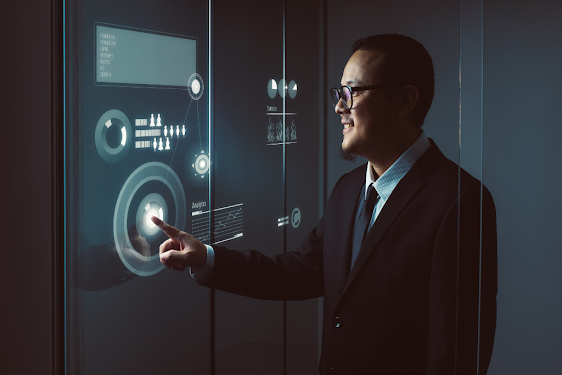The Influence of User Insights on Advancing Security Technologies
Introduction
Security technologies have evolved rapidly to meet the growing demands of individuals and businesses. However, this evolution isn’t solely driven by innovation or emerging threats—it is also heavily influenced by user experiences. The way users interact with security systems provides invaluable insights into how these technologies can be improved for greater efficiency, usability, and effectiveness. This blog explores how user feedback and experiences actively shape the development of modern security technologies.
1. The Importance of Usability in Security Systems
Usability is a critical factor for any security technology. No matter how advanced a system is, if it is difficult to operate or understand, its efficiency diminishes. User experiences have highlighted the need for simple yet powerful interfaces.
For example, systems with streamlined mobile app controls and clear instructions are far more likely to gain user trust and widespread adoption. Developers analyze user feedback to identify pain points such as complex setup processes or unintuitive navigation. This information fuels the creation of more user-friendly designs that enhance accessibility for people of all technical backgrounds.
2. Personalization and Adaptability Through User Feedback
One of the growing trends in security technology is personalization. Users increasingly demand systems that adapt to their specific needs rather than offering a one-size-fits-all solution. Through surveys, focus groups, and direct interactions, developers gain insights into the customization options users prefer.
Whether it’s adjustable sensitivity for motion sensors or tailored notification settings, user experiences guide these advancements. Security technologies now come with options to modify features according to individual preferences, making them more effective and user-centric.
3. Integration with Broader Security Needs
User feedback has also highlighted the importance of seamless integration. Modern users want systems that combine various security elements, from surveillance cameras to access controls, into a unified platform.
For instance, customers seeking Door Security Services in Chicago often prioritize solutions that integrate with existing smart home systems. This demand pushes developers to create interoperable platforms that provide comprehensive security coverage without technical glitches. By addressing such user needs, companies can deliver enhanced security solutions that fit effortlessly into users’ daily lives.
4. Enhancing Real-Time Response Features
One of the key aspects where user experiences significantly influence security technologies is the demand for real-time updates and responses. Users prefer systems that provide instant notifications for breaches, suspicious activities, or system malfunctions.
Feedback has driven advancements in features like push alerts, live video feeds, and remote system control. Today’s security technologies are designed to offer rapid responses, empowering users to act promptly in the face of potential threats. This real-time capability is a direct result of understanding and prioritizing user needs for immediacy and accuracy.
5. Incorporating Environmental Monitoring Capabilities
Beyond protecting against theft and intrusion, users are increasingly looking for security systems that address environmental safety. Features like smoke detection, carbon monoxide alerts, and flood monitoring have become essential components of comprehensive security setups.
6. Leveraging AI and Machine Learning for Smarter Systems
Artificial intelligence (AI) and machine learning (ML) are transforming how security technologies operate. These tools allow systems to learn from user behavior, anticipate needs, and minimize errors such as false alarms.
Users frequently express the desire for systems that are proactive rather than reactive. For example, AI-powered systems that predict and prevent potential threats before they occur are becoming more popular. These innovations stem from an understanding of user preferences for smarter, more intuitive solutions.
7. Creating a Feedback Loop for Continuous Improvement
The relationship between users and security technology developers doesn’t end at product launch. Continuous feedback loops allow developers to refine existing systems and create new features based on evolving user needs.
User-centric approaches, such as beta testing and regular surveys, ensure that developers stay aligned with their audience. By fostering open communication channels, companies can respond swiftly to concerns, build trust, and stay competitive in the ever-evolving security landscape.
Conclusion
User experiences are a cornerstone of innovation in security technologies. From driving usability improvements to demanding advanced integration and real-time capabilities, user feedback ensures that security systems evolve to meet practical needs. By addressing concerns, incorporating customization, and leveraging AI advancements, developers can create solutions that are not only technologically advanced but also truly user-friendly. As this collaborative relationship continues, security technologies will become increasingly effective at safeguarding both physical and digital spaces.
.png)
.png)
Comments
Post a Comment